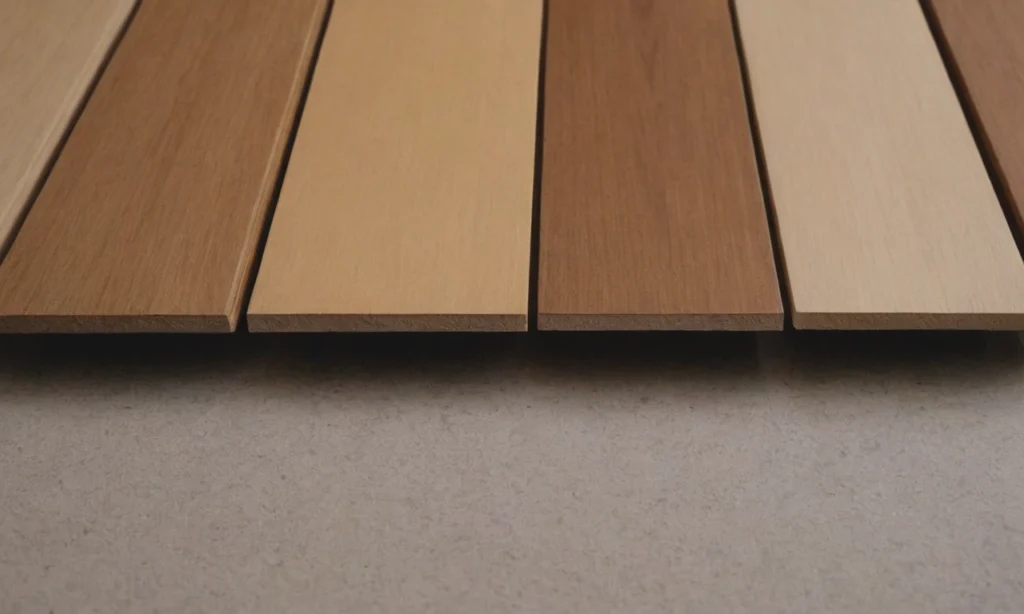When decorating your home, proper curtain placement is essential for both aesthetics and functionality. A common question homeowners face is whether curtains can hang above baseboards without causing problems. This comprehensive guide addresses this question while providing valuable information about baseboards and their role in home décor.
The Short Answer
Yes, curtains can hang above baseboards in most situations. However, there’s an important exception: if you have electrical baseboard heaters, curtains should hang a minimum of 4-12 inches away from the heater to prevent fire hazards.
Understanding Baseboards
Baseboards, also known as skirting boards, are decorative and functional trim installed at the base of interior walls where they meet the floor. They serve multiple purposes in your home:
- Protect walls from damage caused by furniture, vacuum cleaners, toys, and foot traffic
- Cover the expansion gap between flooring and walls
- Conceal uneven edges where flooring meets walls
- Add architectural detail and visual appeal to rooms
- Create a finished, polished look in your interior spaces
Curtains and Baseboards: Safety Considerations
The relationship between curtains and baseboards primarily depends on the type of baseboards you have:
Standard Baseboards
With traditional non-heating baseboards (wood, MDF, vinyl, etc.), you can safely hang curtains that extend all the way to the floor or just above the baseboard. This is purely an aesthetic choice with no safety concerns.
Electric Baseboard Heaters
If your home has electric baseboard heaters, you must maintain a safe distance between the heaters and your curtains:
- Curtains should hang at least 4-12 inches above electric baseboard heaters
- Ideally, consider using blinds or shorter curtains instead of floor-length options
- Choose flame-resistant curtain materials when possible
- Never allow curtains to touch or drape over heating elements
Types of Baseboard Materials
Various baseboard materials affect not only your home’s appearance but also durability and maintenance requirements. Here are the most common options:
1. MDF (Medium-Density Fiberboard) Baseboards
- Advantages: Affordable, smooth finish, consistent texture, paintable
- Considerations: Not water-resistant, best for dry interior spaces
- Curtain compatibility: Excellent for standard curtain hanging
2. Vinyl, PVC, or Urethane Baseboards
- Advantages: Moisture-resistant, durable, paintable, low maintenance
- Considerations: Good for bathrooms, basements, and high-traffic areas
- Curtain compatibility: Ideal for all curtain types, including in humid spaces
3. Pine Wood Baseboards
- Advantages: Natural appearance, moderate durability, paintable or stainable
- Considerations: May dent more easily than hardwoods, can handle some moisture
- Curtain compatibility: Works well with traditional curtain styles
4. Oak Wood Baseboards
- Advantages: Beautiful grain, exceptional durability, high-end appearance
- Considerations: More expensive than other options, can be painted or stained
- Curtain compatibility: Perfect for elegant, floor-length curtains in formal spaces

Choosing the Right Baseboard Size
The appropriate baseboard height depends primarily on your ceiling height:
| Ceiling Height | Recommended Baseboard Height |
|---|---|
| 8-foot ceiling | 3-5 inches |
| 9-foot ceiling | 4-6 inches |
| 10-foot ceiling | 5-7 inches |
| 12-foot ceiling | 6-8 inches |
Proper proportions ensure your baseboards complement your space rather than appearing awkwardly small or overwhelmingly large.

Popular Baseboard Styles and Profiles
Baseboards come in numerous styles to match your home’s architectural design:
1. Flat Baseboard Molding
Clean, minimal look ideal for contemporary and modern spaces
2. Flexible Baseboard Styles
Bendable options perfect for curved walls and unique architectural features
3. Joint Baseboard Styles
Traditional baseboards with separate base caps for added detail
4. Carved Baseboards
Decorative options that add ornamental elements to your room
5. High Trim Profile Baseboards
Tall baseboards that make a dramatic statement in spacious rooms
6. Clamshell Baseboards
Features a curved profile at the top for a soft, traditional appearance
7. Ornate Baseboards
Highly detailed options for Victorian, colonial, or other traditional design styles
Best Practices for Curtains and Baseboards
To achieve the most attractive and functional relationship between your curtains and baseboards:
- Consider curtain length carefully: Most designers recommend curtains that either:
- Hover just above the floor (½ inch clearance)
- Break slightly at the floor for a relaxed look
- Pool on the floor by 1-3 inches for a formal, dramatic effect
- Ensure proper curtain width: Curtains should be 2-3 times the width of your window for a full, luxurious appearance when closed
- Mount curtain rods appropriately: Install rods 4-6 inches above window frames and extend 3-6 inches beyond window width on each side
- For rooms with baseboard heaters: Choose window treatments that stop above the heaters or use alternatives like blinds, shades, or valances
- Coordinate colors and styles: Select curtains that complement your baseboard style and room décor for a cohesive look
Final Thoughts
Curtains can safely hang above standard baseboards with no concerns. The only exception is when you have electric baseboard heaters, which require adequate clearance to prevent fire hazards. By understanding your baseboard type and following proper installation guidelines, you can create beautiful window treatments that enhance your home’s appearance while maintaining safety.
When selecting baseboards and curtains, consider how these elements work together to frame your space. The right combination adds polished detail to your rooms while protecting your walls and providing the perfect finishing touch to your interior design.
